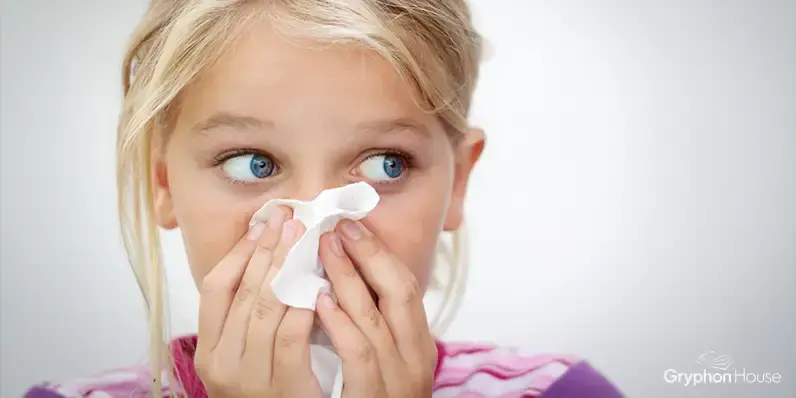Achoo! Teaching Healthy Hygiene to the Little Ones
January 26th, 2018 | 2 min. read

With winter weather comes cold and flu season. Children are germ magnets, and preschools and daycares especially can become a breeding ground for bacteria. Since young children are particularly susceptible to catching contagious illnesses, teachers and caregivers must be extra cautious when preventing disease in the classroom.
Preschool Health and Safety Matters by author Jody Martin helps teachers best determine how to manage illness in the classroom. The book features easy and effective strategies to disinfect the classroom environment, encourage healthy washing habits, and identify when a child is too sick to be in school. Below are a few tips on how to keep your classroom happy and healthy this cold and flu season.
Hand Washing: This is probably the first thing people think of when trying to prevent illness. Washing hands with warm water and soap is the best way to kill germs, and should be done frequently. Since young children are so fond of physical contact, it’s important they wash their hands when arriving at school, before and after meals, after outside play, after blowing their nose or sneezing, and of course after using the bathroom. A simple trick to encourage children to wash their hands is by providing them with a hand washing song. Here is a simple example to the tune of “This is the Way We Wash Our Clothes:”
This is the way we wash our hands
Wash our hands, wash our hands
This is the way we wash our hands
So early in the morning!
This is the way we spread the soap
Spread the soap, spread the soap
This is the way we spread the soap
In between our fingers!
This is the way we rinse our hands
Rinse our hands, rinse our hands
This is the way we rinse our hands
And now our hands are all clean!
Have the children sing this song to themselves each time they wash their hands. That way, they remember the proper technique while also making sure they wash long enough to kill any lingering germs.
Sanitizing: Hands aren’t the only places germs can hide; toys and tables also hold contagious cold viruses. The surfaces your children use every day should be both washed and sanitized regularly. What’s the difference? While washing (scrubbing with soap and water) removes the surface grime, most cleaning soaps aren’t antibacterial, which means germs can still be there. Sanitizing is using a cleaning product to kill the germs left behind. A simple bleach and water solution can do both at the same time: Simply mix one tablespoon of bleach per quart of water to make a safe solution that kills germs. Use it on toys, desks, whiteboards—anything that might need cleaning.
Taking Sick Days: Sometimes it can be difficult to determine when a child should stay home from school. Young children’s immune systems are still developing, and so often have one symptom or another as their body becomes accustomed to fighting illnesses. So when is it okay for kids to go to school and when should they stay home? Generally, any of these symptoms indicate that a sick day is in order:
- Fever of 100° F or higher accompanied by behavior changes (i.e. grumpiness) or any other symptom on this list
- Diarrhea
- Blood in the stool
- Sore throat with fever, swollen glands, and/or mouth sores
- Vomiting two or more times in the past 24 hours
- Eye discharge that is thick or pus-like
- Head lice
- Severe coughing (whooping cough)
- Persistent abdominal pain for more than two hours
- Uncontrolled coughing, wheezing, or difficulty breathing
If a child displays any of these symptoms, he is likely too sick to go to school and may risk passing on illness to other children in the classroom. If you notice a child with these symptoms has come in to preschool or daycare, it is best to call the parents and ask if the child can be brought home.
Nobody wants to get sick, but with the right precautions, teachers and caregivers can prevent the spread of germs and make cold and flu season easier for everyone!
Author(s)Jody Martin
Ashleigh Craven has a decade and a half of diverse category experience from agency communications to athletic apparel to automotive to education, developing and executing communication strategies in both traditional and social media. She has supported national product launches and corporate events for the likes of Soffe, Buick, Chevrolet, Wake Forest University , Kaplan, and others. She has an BA from the University of Michigan in English and Communication Studies and an MA from Wake Forest University, where she focused her studies on argumentation and presidential rhetoric and speechwriting. She served as director of marketing for Gryphon House from 2017- 2020.
Topics: